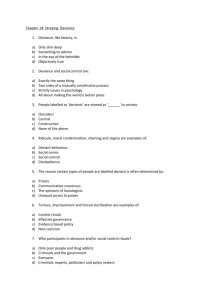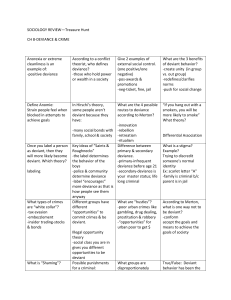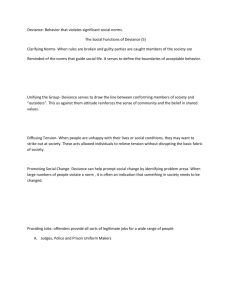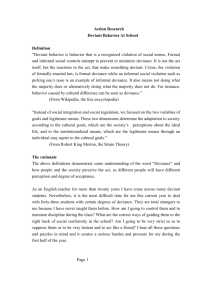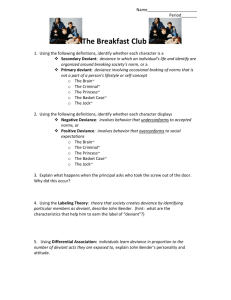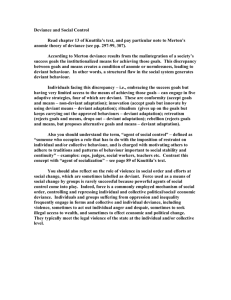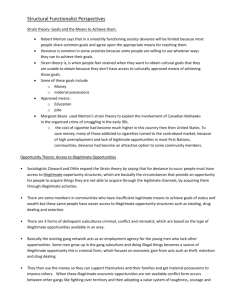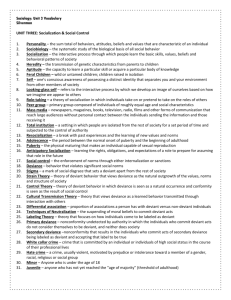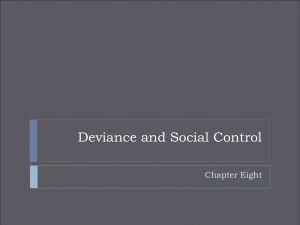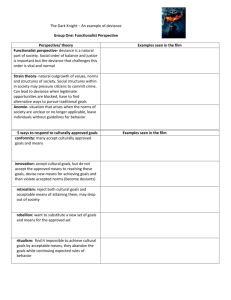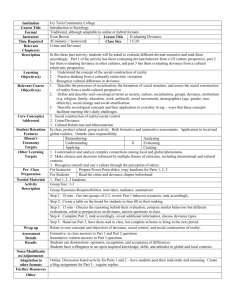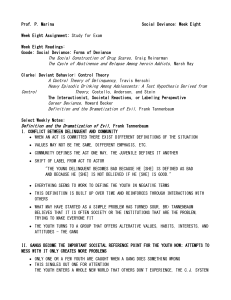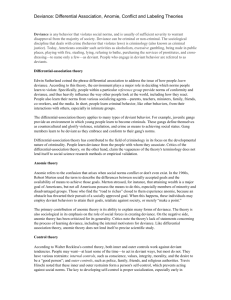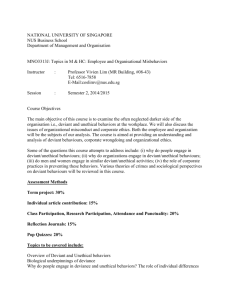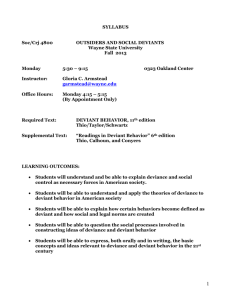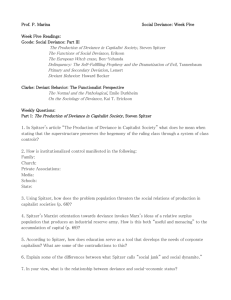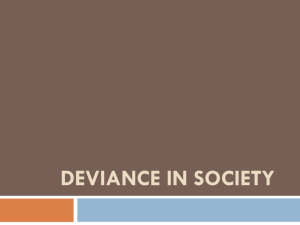Why do people commit deviant acts?
advertisement
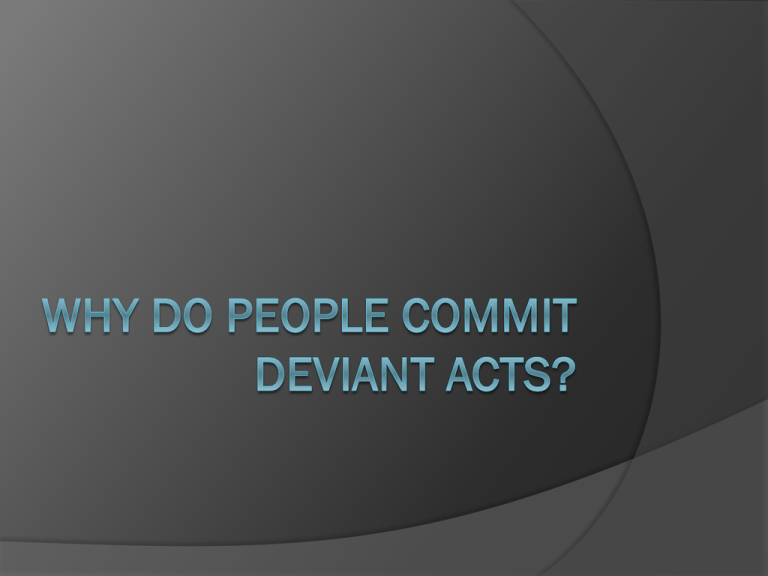
There are three sociological perspectives that explain deviance? Functionalist Conflict Interactionist Functionalist Strain theory – views deviance as a natural outgrowth of values, norms, and structure of society. Societies goal is to achieve economic success However not every one has access to the legitimate means to achieve these goals. Anomie- the situation that arises when the norms of society are unclear or no longer applicable. Merton’s Structural Strain Theory Conformity Innovation Ritualism Retreatism Rebellion Conflict Perspective Competition and social inequality lead to deviance. See social life as a struggle between those who posses power ( ruling class ) and those who do not ( lower class ) People with Power Commit deviant acts in a effort to maintain their position. Label any behavior that threatens their power base as deviant Explain deviance as a problem of the lower class Crime enforcement efforts are most directed toward crimes committed by the lower classes People without power Commit deviant acts to obtain economic rewards. Low self esteem and feelings of powerless People without power don’t necessarily commit more crimes than other people. Rather, they commit crimes that are most likely to be detected and punished Interactionist perspective Control theory: explains deviance as a natural occurrence. Cultural transmission theory: explains deviance as a learned behavior Differential association: frequency and closeness of a associations a person has with deviant and non deviant individuals Other aspects of Deviance Labeling theory: how individuals come to be identified as deviant Primary deviance: deviance that goes undetected Secondary deviance: results in a individual being labeled a deviant Degradation: public setting, trial , guilty, punished and labeled deviant
